
By Angelo Randaci, Earth’s Ally Horticulturist
Angelo’s passion for plants has led him to explore many areas of horticulture including research, grounds management, technical training, design and nursery management.
Many of the most destructive insects are also the smallest. Thrips (the word thrips is used for both the singular and the plural) are one such small but mighty destructive pests that can cause havoc on your plants, inside and out.
What are thrips? Thrips are small, tiny soft-bodied insects less than 1/20” long when fully grown. The nymphs look like a smaller version of the adults but do not have wings. Colors range from yellow, green, red, brown, or black.
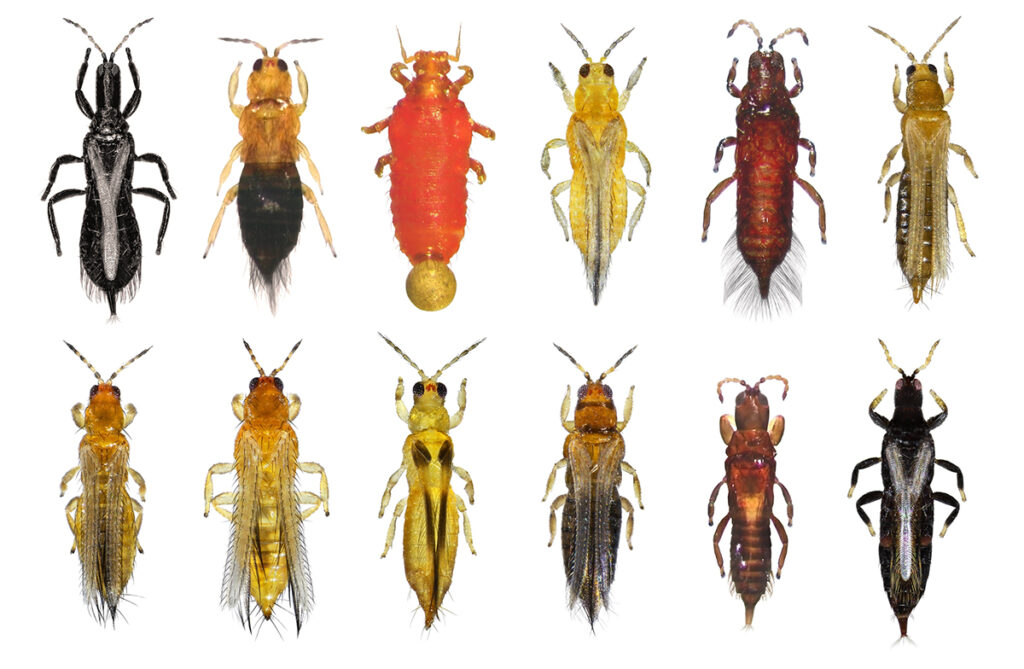
There are over 5,000 species of thrips but the most common and damaging species are: onion thrips, gladiolus thrips, pepper thrips, and Western flower thrips. Onion thrips feed on onion, beans, and cabbage plants and may cause severe damage. Gladiolus thrips feed on the corms, stems, leaves, and flowers of gladiolus. Pepper thrips are newly invasive to Florida and primarily feed on pepper plants and other nightshades, but will eat a large variety of plants. Western flower thrips will feed on any of the plants listed above as well as numerous other plants.
Did you know that thrips bite? Studies have confirmed that thrips, both adults and larvae can bite people. Human reactions are variable reactions from slight irritation to the formation of a rash with intense itching that can last for several days.
Thrips Life Cycle
Adult thrips overwinter in plant debris, bark, or other types of organic matter. They become active in early spring and females lay rice-like or kidney-shaped eggs singly in small cuts or wounds in leaves, fruits, or stems.
Eggs hatch in 3 to five days when tiny larvae (or nymphs) emerge. The egg stage is followed by two larval stages where the larvae actively feed on plants for 1 to 3 weeks. They then develop two pupal stages before becoming adults. They do not feed during the pupal stages.
Thrips can reproduce without mating, and both mated and unmated females can lay eggs. Their life cycle can be completed in about two weeks and several generations may occur each year. Thrips populations are most severe during spring and early summer. One of the best ways of identifying them is by the damage they cause.
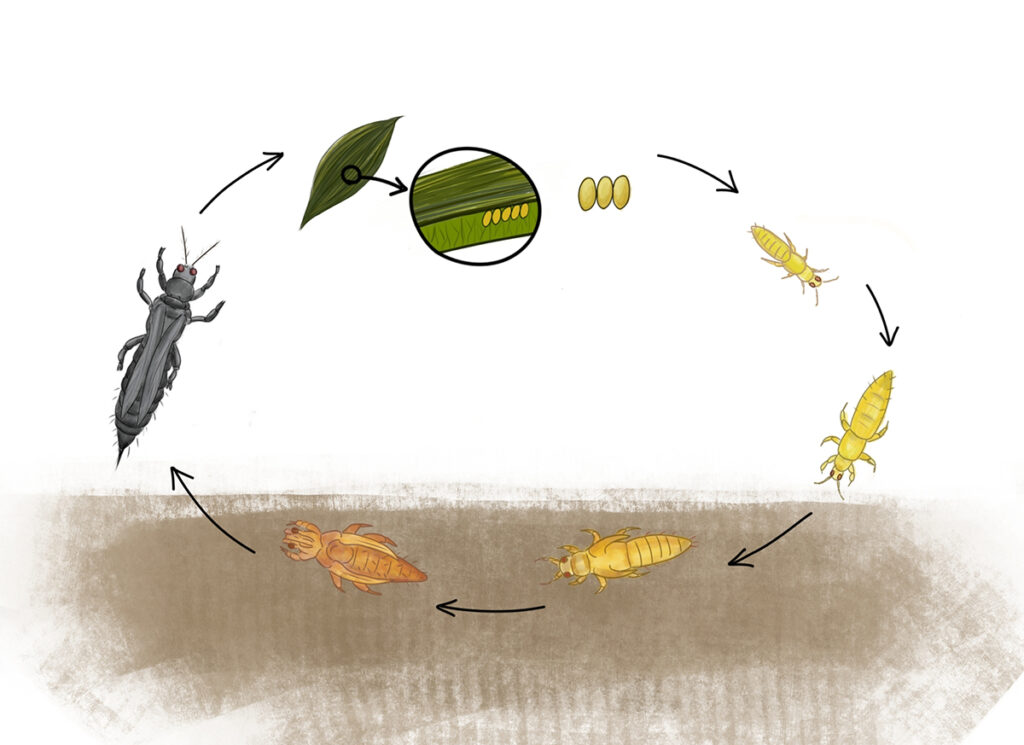
Plant Damage
One of the earliest signs of a thrips infestation is gray or dull-colored leaves. Look for dark excrement deposits combined with stippled or wrinkled leaves. Damage is evident on both the top and undersides of the leaves. Infestations can be avoided by identifying the problem early on.

Thrips have piercing and sucking mouthparts that they use to feed on plant tissue. The way they do this is by puncturing the outer layer of plant tissue, then sucking out the cell contents. Thrips can stunt plant growth and damage leaves and flowers.
Leaves become papery and distorted. They may also develop tiny spots (stippling) and drop prematurely. They may feed on foliage, buds, or open flowers scarring delicate leaf and flower tissues. Damage on flowers appears as white or brown irregular blotches.
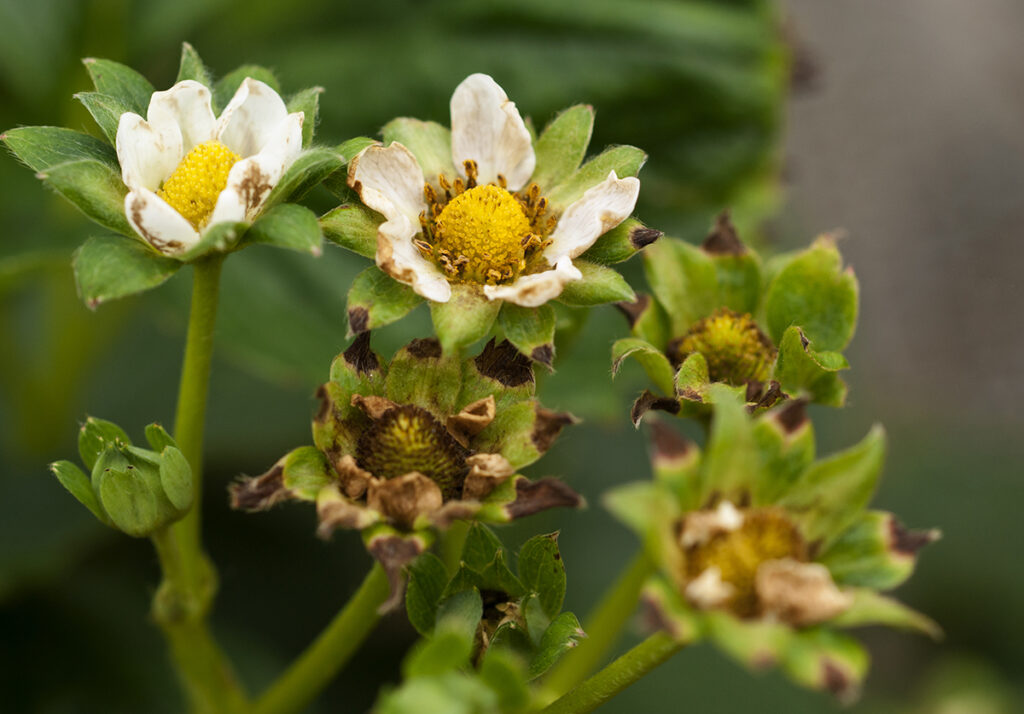
Western flower thrips are of main concern because they feed on a variety of both vegetable and ornamental plants. They are also known to transmit tomato spotted wilt virus (TSWV) to a variety of plants. TSWV is a wilt disease that can infect a wide host range of plant species including chrysanthemums, petunias, impatiens, nasturtium, begonia, tomato, pepper, eggplant, potato, lettuce, spinach, cucurbits, and many more.
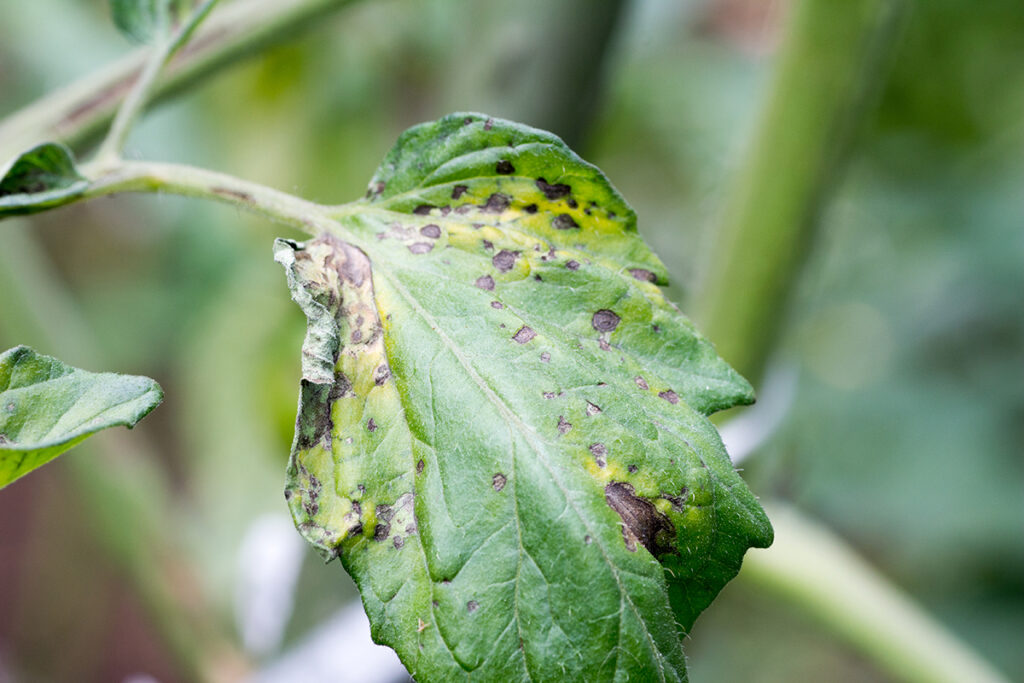
Infected plants cannot be cured and must be removed to prevent the disease from spreading. A few commercially available tomato and pepper cultivars offer virus resistance.
How to Prevent Thrips
Thrips will often move into your landscape from nearby weedy and grassy areas that have dried during hot spring or summer months. Avoid planting near these areas and keep weeds under control.
Practice the right plant, right place principle. Plants adapted to sunny areas may become stressed if planted in shade, attracting thrips and other pests. Providing appropriate cultural care will increase their tolerance to damage. Provide adequate water and avoid excessive nitrogen fertilizer which may promote soft new growth attractive to thrips.
Related: Right Plant, Right Place

Monitor thrips by hanging bright yellow sticky traps in or near plants suspected of having thrips. This is effective for catching adults for identification both indoors and out.
Reflective mulch delays or prevents thrips and other flying insects from infesting plants due to reflected ultraviolet light that confuses insects’ ability to locate the host plant; they’re available commercially. Aluminum foil is also effective.
Grow a diversity of plants in your garden. This will attract many different insect species including beneficial insects that will help keep all your pest populations down. This is a long-term strategy that will add to the overall health of your outdoor environment.
Houseplants
Thrips can also devastate your plants indoors. This may happen when plants that are moved outdoors for the summer acquire thrips which are then brought indoors. New plant purchases may also bring thrips into your home.
Female thrips insert eggs into plant foliage, flowers and stems the same way they infect your outdoor plants. Once hatched, the nymphs begin feeding on your plant. Nymphs will then drop to the soil where they undergo the pupal stage. They then emerge as adults and continue the cycle.
Some plants are more resistant to thrips than others. Kitchen herbs such as basil, lavender, lemon thyme, and rosemary have repellent properties although no plants are completely resistant. If you detect thrips on a houseplant, quarantine it immediately to keep your other plants thrips-free. Follow the control methods listed below. If severe, discard the entire plant to avoid spreading these tiny pests to your other plants.
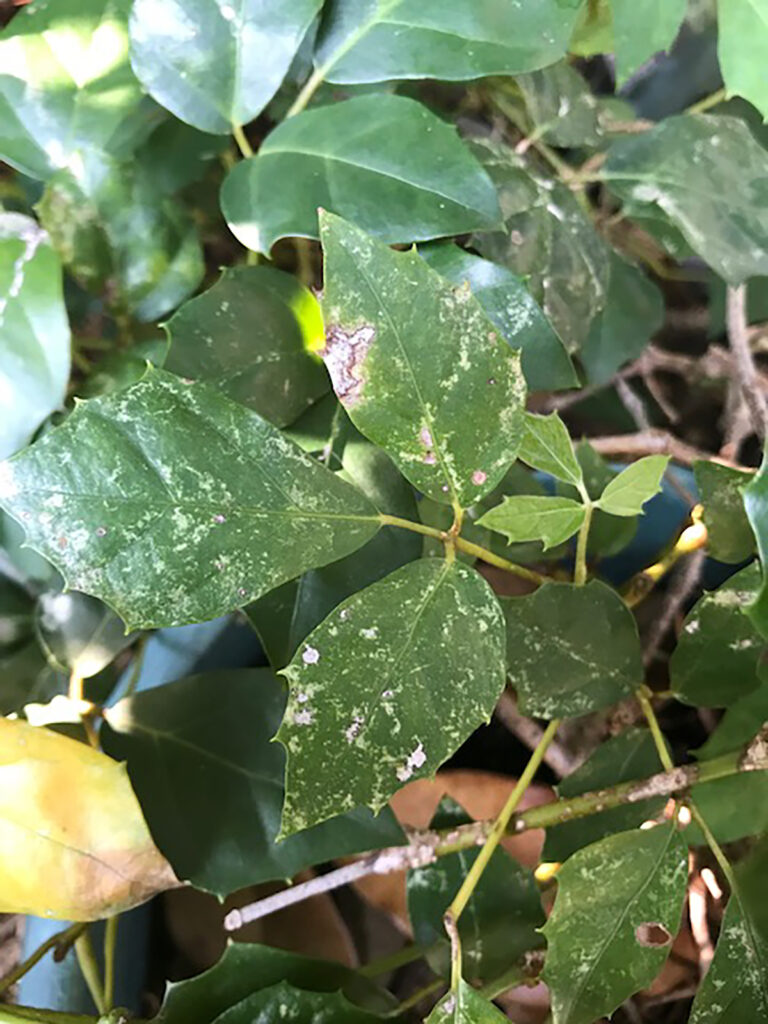
How to Get Rid of Thrips
Infestations can be challenging to control once established. A combination of cultural practices organic sprays, and persistence will achieve control. The sooner thrips are detected, the easier they will be to control.
Cultural practices include pruning affected leaves, stems, and flowers. Clean and disinfect any surfaces or tools that have come into contact with the infested plant. Bag clippings and put them in the trash. Do not compost them. Another cultural practice is to spray affected plants with water to dislodge adults and feeding nymphs. Use a gentle spray making sure to spray both the upper and lower surfaces of leaves.
Thrips Control with Earth’s Ally 3-in-1 Plant Spray
Thrips are notorious for developing resistance to chemical insecticides. Insecticide resistance occurs when a small portion of the insect population survives treatment with the chemical. The survivors then reproduce, passing resistance on to their offspring. With continued use, more and more of the pest population becomes resistant ultimately rendering the chemical ineffective. Chemical pesticides can also harm pollinators and beneficial insects.
Earth’s Ally 3-in-1 Plant Spray is a solution to pest resistance. The combination of thyme, rosemary, clove, and peppermint oils control thrips and other soft-bodied insects on contact by both paralysis and suffocation. The essential oils work to disrupt their nervous system preventing them from feeding and reproducing. The oils also penetrate the eggs, killing the developing embryos. Earth’s Ally 3-in-1 Plant Spray also has strong repellent properties to help deter thrips and other pests.
We’d love to hear how Earth’s Ally 3-in-1 Plant Spray is helping you care for your plants! Share your experience and stay connected with the #EarthsAlly community on Facebook, Instagram and Twitter for access to our latest blog posts, giveaways and exclusive promotions.
